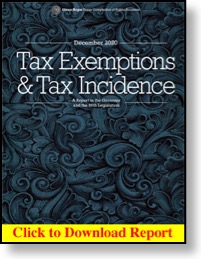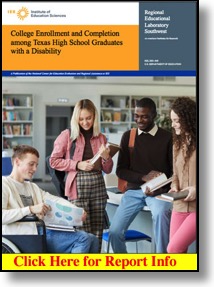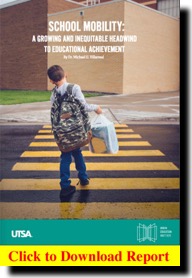Tax Exemptions
The state comptroller released (Dec. 4) a 71-page (press release) report — Tax Exemptions & Tax Incidence — that is issued biennially before each regular legislative session to show the estimated values of various tax exemptions.
For Fiscal Year 2021 (Sept. 1, 2020, to Aug. 31, 2021), the report estimates the total exemptions for the various types of revenue sources will total an estimated $58.6 billion, including $44.5 billion for state sales tax exemptions.
School property tax exemptions or special appraisals of $14.1 billion for Tax Year 2021 are expected to increase to $18.2 billion by Tax Year 2026, the report estimates.
The report makes no recommendation for retaining, eliminating or amending any provisions related to tax exemptions, but the report could serve as a guide for legislators in determining whether to expand, reduce or eliminate various tax exemptions.
The comptroller also reported (Dec. 1) that sales tax revenue totaled $2.98 billion in November, 6.3 percent less than November 2019.
School Counseling Initiative
A coalition of six Texas education organizations announced (Dec. 1) they will provide new resources and tools to help high school counselors and students curb the pandemic’s negative effect on college enrollment.
The collaboration, called the Future Focused Texas Initiative, was launched with the goal of providing virtual advising resources to high school students, including an online virtual advising tool that will allow both students and counselors to get answers to the most common questions about college 24 hours a day. One of the major goals of the initiative is to provide resources for students in completing the federal application for college student financial aid.
College Students with Disabilities
A study (summary) released (Nov. 23) by the American Institutes for Research (AIR) examined College Enrollment and Completion among Texas High School Graduates with a Disability. The study concluded that Texas students with disabilities who graduate high school are less likely to enroll in (and complete) college than students without a disability.
Some of the other findings include:.
- College enrollment was substantially lower for high school graduates with a disability than graduates without a disability.
- Fewer than one of three high school graduates with a disability enrolled in a Texas college within two years of graduation — and of those who did, 90 percent enrolled in a two-year college.
- Among students with disabilities, college enrollments were substantially lower for economically disadvantaged and Hispanic graduates.
- College enrollments were highest for students who had a speech, visual or auditory impairment — and were lowest for those with an intellectual disability.
AIR cautioned that the findings should be considered “limited in scope” because the research drew primarily on surveys with voluntary responses and often with a small sample size.
The Texas Higher Education Coordinating Board maintains an Advisory Council on Postsecondary Education for Persons with Intellectual and Developmental Disabilities (info here) that is charged with advising the board on policies and practices to improve postsecondary opportunities for persons with intellectual and developmental disabilities. (See also this recent Coordinating Board report on this topic.)
BuyBoard Savings
The Local Purchasing Cooperative — also known as BuyBoard — announced that it has disbursed a record amount of nearly $10.5 million in rebates to 1,091 cooperative members that include public school districts, colleges/universities and other local governmental entities throughout Texas. BuyBoard is headquartered at the Texas Association of School Boards.
Student Mobility Study
The UT San Antonio Urban Education Institute study (summary) looked at the effects of student mobility in Bexar County’s ISDs and charters — students changing schools for issues unrelated to factors such as grade promotion, school closures or changes in attendance zones.
Among other things, the report noted that students at charter schools had overall mobility rates of nearly double that of their traditional public school counterparts and that charter students were more likely to change schools after being written up for disciplinary actions than were ISD students.
Also, charter students are more likely to gain special-ed services if they move to a traditional ISD, and more likely to lose special-ed services if they move from a traditional ISD to a charter, the report found.



